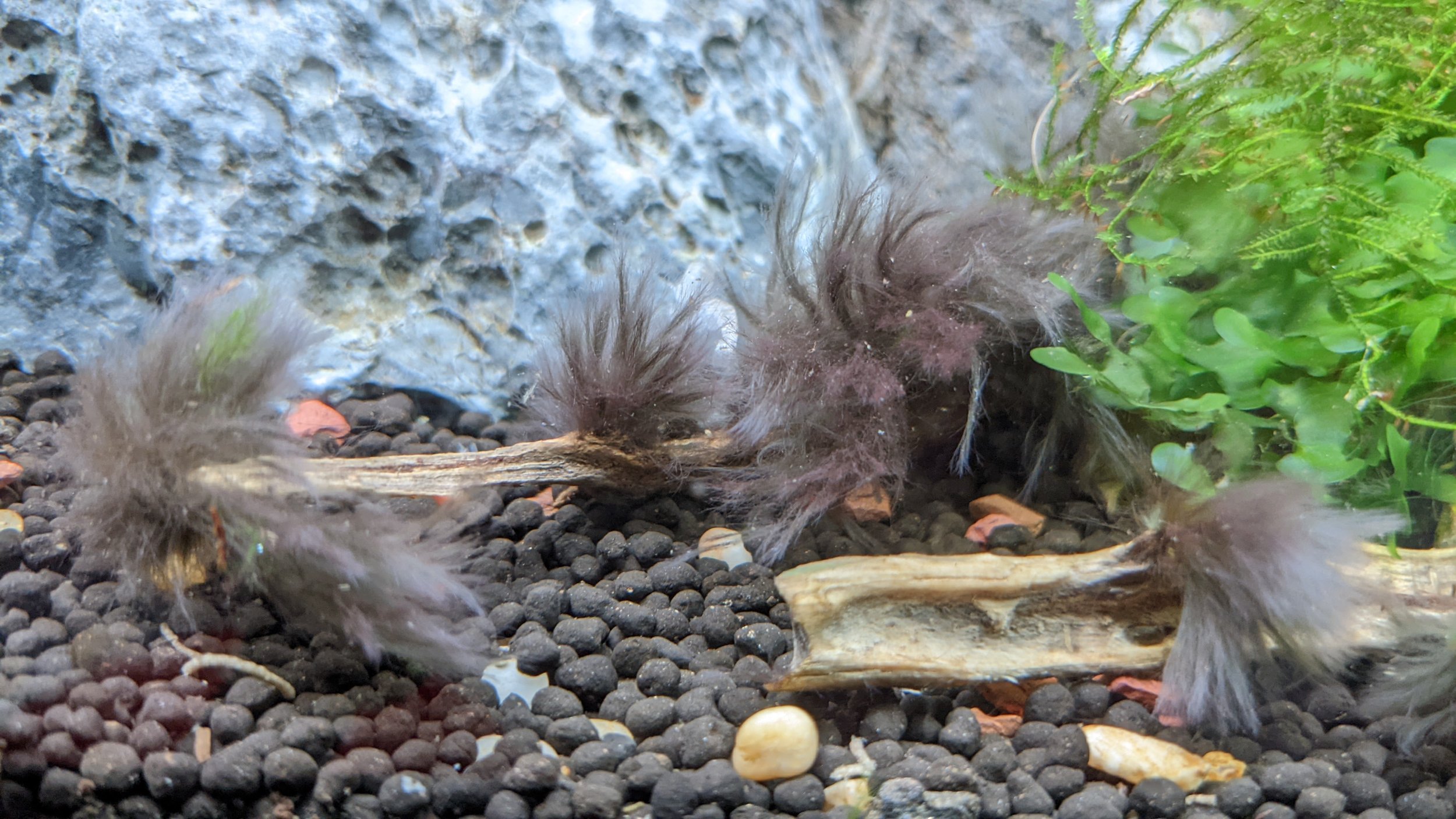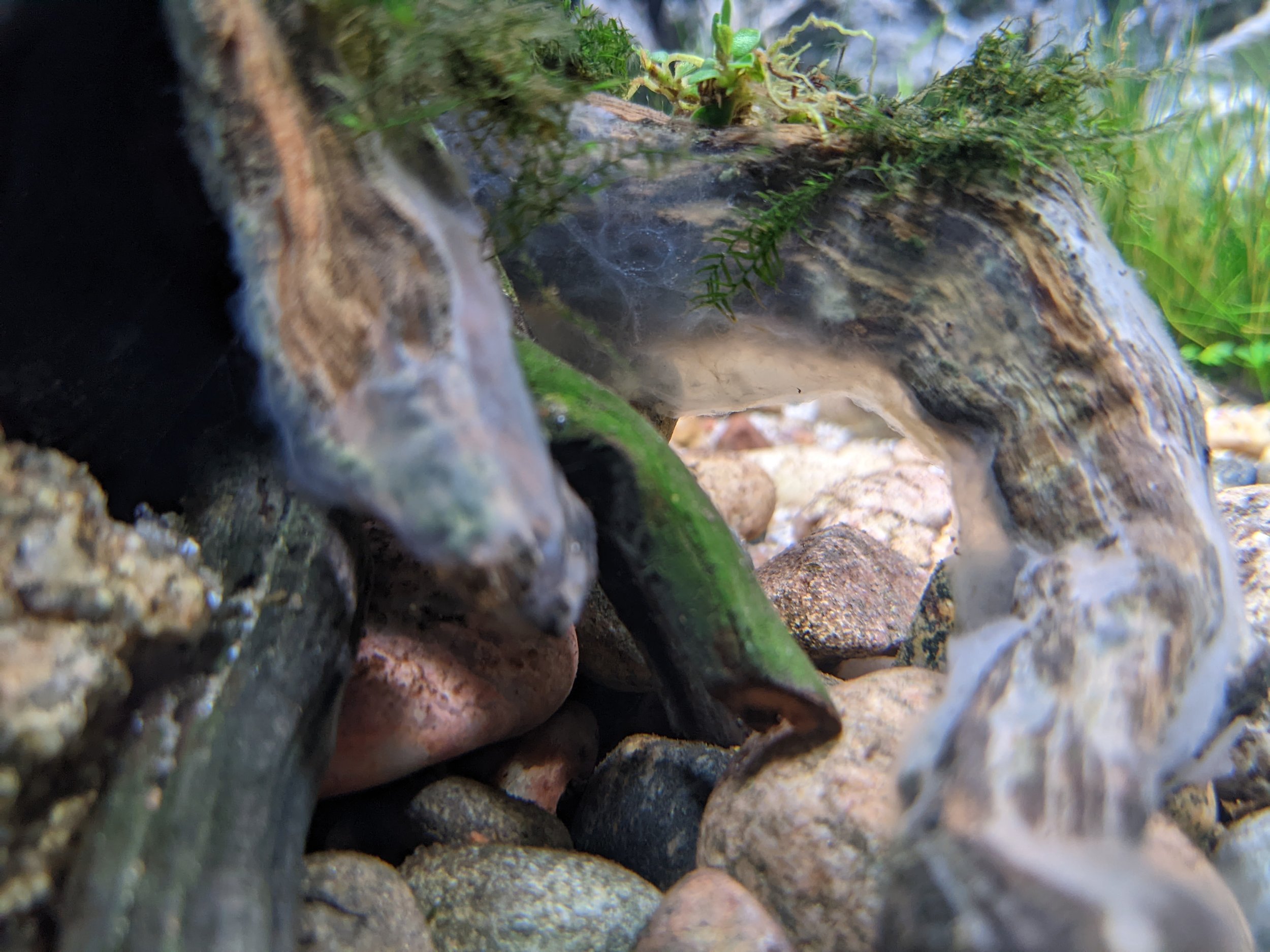The 7 most common types of algae in a planted aquarium
What is algae?
If you’ve kept an aquarium before, chances are you’ve dealt with algae. Algae is a plant-like organism that often finds its way into our aquariums uninvited. Algae ranges in size from single-celled microscopic organisms to giant kelp forests as tall as 10 story buildings.
In your freshwater aquarium, algae can take on many different shapes and colors from slimy green matts to fuzzy gray patches. A little bit of algae can add the perfect touch of nature to an aquarium. Too much algae, on the other hand, is not fun to look at.
For the most part, algae is not bad for an aquarium. In fact, a lot of fish will enjoy grazing on algae or the little microscopic critters that live in it. The problem is that algae can quickly get out of hand.
Algae competes with plants for nutrients and light. When it covers plants, it suffocates and can eventually kill them. Algae can also clog up filters resulting in stagnant water. Although quite uncommon in the aquarium, it is possible for large algae blooms to deplete oxygen levels at night. Algae blooms can also crash, resulting in lethal ammonia spikes.
The 7 most common types of aquarium algae
The seven most common types of freshwater aquarium algae, especially when it comes to planted aquariums, are…
Blackbeard algae
Brown or diatomaceous algae
Green spot algae
Green dust algae
Blue-green algae (it’s actually a cyanobacteria)
Green hair algae
Greenwater
The sources of algae
The most common reasons for algae in aquariums is there are too many nutrients (e.g., ammonia/nitrates) in the water column and/or the lights are too bright. Of course, that’s an extreme oversimplification considering how many different types of algae there are and specific triggers for each type. Not to mention, there are plenty of planted aquariums with high levels of light and fertilizers that don’t have loads of algae.
There are lots of triggers for specific types of algae, but unless you are doing a high tech planted aquarium, the best thing you can do is to keep your light at a modest level for no more than 8 hours a day, and keep your water clean with weekly or biweekly water changes.
Specific causes and solutions are provided for each type of algae mentioned above. However, the first thing you should do with any algae is physically remove as much of it as you can. Don’t be afraid to use your fingers to pinch and pluck away. Scissors can be used to cut off infested leaves. Brushes are good for scraping off wood. Sponges are great for the glass, but in some cases a razor blade will be needed. Just be sure not to scrape the silicone seals on your aquarium. Last, but certainly not least, lower the light level, at least until the algae outbreak is under control.
Blackbeard algae
Appearance: This fuzzy, gray-to-black algae is one of the more common nuisance algae in planted aquariums. Although I don’t mind having a few clumps of it here and there, it can quickly get out of hand. It’s best to remove any black beard algae (BBA) before it spreads. You’ll usually see it growing on tips of leaves or hardscape first.
Source: BBA is often associated with high levels of nutrients, organic waste and intense lighting. In aquariums with CO2, fluctuating or low levels of CO2 can result in black beard algae.
Solution: Siphon out all organic waste and do a big water change (~50%). If you don’t have CO2, consider getting some. If you do have CO2, make sure that the levels are constant at 30 ppm.
Black beard algae
Brown or diatomaceous algae
Appearance: Diatomaceous algae is brown, slimy and strand-like. Outbreaks can feel really overwhelming because they tend to take over the entire tank out of nowhere. Fortunately these usually take care of themselves over the course of a couple weeks.
Source: Brown algae usually shows up early, maybe a month or so after setting up an aquarium. It’s often associated with aquariums with sandbeds.
Solution: Brown algae can be best removed from an aquarium by lightly brushing and twirling it with a toothbrush. Brown algae outbreaks are often pretty severe, but they usually disappear as quickly as they arrived, about a week or two. With that being said, don’t kill yourself trying to remove every strand of brown algae. It’s impossible and will keep coming back til it decides to clear up.
Brown algae
Green spot algae
Appearance: This looks exactly like it sounds. Green spot algae are little green spots that show up on glass, hardscapes and slow growing leaves. It’s a very common algae that isn’t usually as aggressive as some of the other types.
Source: Green spot algae tends to show up in tanks with high lighting and low phosphates.
Solution: Put slow growing plants in shadier parts of the tank. If you’re not using fertilizer, consider getting some (with phosphates) or increasing what you are currently using. CO2 also helps keep green spot algae down.
Green spot algae
Green dust algae
Appearance: This is another one that looks just like it has been named - like a green dusting. It’s very similar in appearance to green spot algae, except it forms a uniform surface like the picture above. This algae will often grow along the glass of a tank, and can spread extremely quickly.
Source: Green dust is common in new tanks with young plant communities as well as tanks that use estimative indexing, a method of fertilizing high levels of nutrients. High levels of lighting in combination with high levels of nutrients and young plant communities will make the perfect storm for green dust algae.
Solution: If your tank is young and the plants are still filling in, chances are the green dust will take care of itself. That’s what happened in the picture above. Reason being is that when plants get larger, they outcompete green dust for nutrients. Additionally, reducing fertilizers and lighting plus diligently staying on top of 50% weekly water changes will help keep this algae at bay.
Green spot algae
Blue-green algae (cyanobacteria)
Appearance: Blue-green algae looks slimy, is normally blueish green (although can range from red to dark green) and can either be strand-like or grow into full on matts. This “algae” is actually a type of bacteria, cyanobacteria. For all intents and purposes, it can be considered an algae. It’s uninvited, uses nutrients and lights to grow and can take over our aquariums.
Unlike the algae discussed above, cyanobacteria can kill fish and plants in your aquarium. If left unchecked, it will quickly take over the aquarium, blocking light and preventing plants from photosynthesizing. They can deplete the water column of oxygen at night when the lights are off.
Source: There are some opposing views on the causes of cyanobacteria in freshwater aquariums. One of the more popular views, and what I’ve observed, is that outbreaks most often occur in tanks with low flow and high organic waste build up. This is especially true in tanks with high light and infrequent water changes.
Solution: There are two ways to remove cyanobacteria from the planted aquarium. The first is a chemical free approach. Black out your aquarium. Put a material over it so that literally no light gets through, but make sure to allow for ventilation so that oxygen can reach the tank. A thick blanket will do the trick. Do this for three to five days.
Chemiclean is a product designed to eradicate cyanobacteria in both salt and freshwater aquariums. I’ve personally used it for both. It’s extremely effective and if you follow the directions, it will pose no harm to your tank. But make sure to follow the directions closely! Overdosing can lead to bad times in your tank.
Cyanobacteria
Green hair algae
Appearance: Green hair algae looks just like it sounds - green and hairlike. There are actually many types of green hair algae, but they all look green and fibrous. When green hair algae gets out of hand, it can take over an aquarium and look more like a mat than tufts of grass like in the picture below.
Source: Green hair algae outbreaks are caused by low flow and low CO2 concentrations. High levels of light, especially in tanks without CO2, can also result in outbreaks.
Solution: Make sure that the filter provides a turnover rate of five to eight times the total tank volume and that there are no stagnant spots where detritus can build up. In combination with flow rate, implementing or maintaining a steady level of CO2 at 30 ppm is the most effective way to keep green hair algae from returning.
Green hair algae
Greenwater
Appearance: Greenwater algae is literally when aquarium water turns green. That’s because billions of microscopic algae called phytoplankton tint the water (see picture below). Although it's perfectly natural to have some phytoplankton in your tank, outbreaks can occur very suddenly.
Source: Greenwater algae is fond of strong light, and is more common in tanks that sit near windows. Infrequent water changes, in combination with high fish waste, are also big contributors for this type of algae.
Solution: Reducing the light on your aquarium and doing frequent water changes (50% weekly) are the cheapest remedies for greenwater. If you want quick results, a UV sterilizer will do a lot of the work for you.
It’s still important to consider the underlying causes. A UV sterilizer will help get rid of greenwater, but if high ammonia or nitrates water are the cause of the outbreak, it will not make the aquarium safer for fish. There is no work around for doing proper maintenance on your aquarium.
Microscopic image of phytoplankton that result in greenwater
Stay on top of things
A little bit of algae is perfectly normal in an aquarium and even looks nice. But don’t let things get out of hand!
The best way to prevent major algae outbreaks is to stay on top of water changes (weekly or bi-weekly). Manually remove algae once a week when doing water changes and make sure your tank isn’t getting too much light.
You can try products like Seachem Excel to help keep algae at bay. Excel does work really well but its not a magic bullet in the fight against algae. Just a tool to use in combination with everything else mentioned above.
Last but not least, don’t beat yourself up over an algae outbreak. It’s nothing that can’t be resolved, plus we’ve all been there. I know how frustrating it can be to deal with, but if you treat the underlying cause you can take on any algae outbreak!








